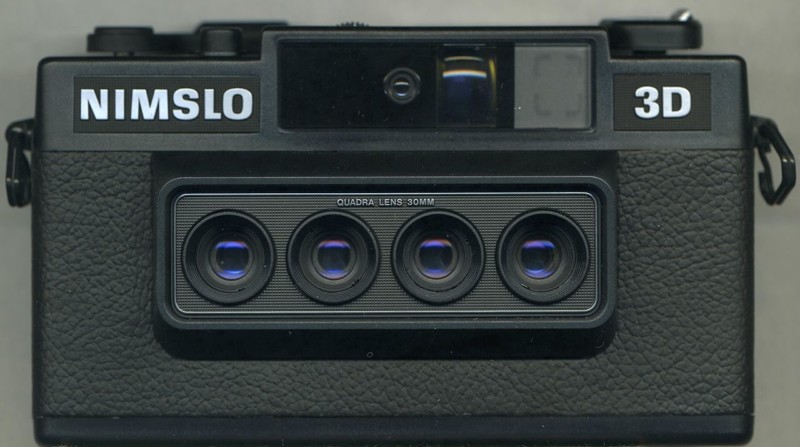Photographer Makes Real-Life GIFs via Lenticular Printing
![]()
A photographer has perfected the process of creating real-life GIFs with images taken on 3D stereoscopic cameras that are then lenticular printed.
Jared Hoffman has been making lenticular prints for six years, taking orders from 3D photographers who shoot with Nimslo, Nishika, and Reto 3D cameras.
“They’re old cameras that shoot with multiple lenses to create a stereoscopic, 3D effect,” Hoffman tells PetaPixel.
“These stereoscopic cameras work by lining up multiple lenses horizontally which trigger all at once, producing multiple views of the same scene from different angles.”

![]()
Printing a 3D image
Once a photo has been taken on a stereoscopic camera, the images are compressed, like frames from an animation, into a single interlaced image which is then printed onto glossy paper at high resolution.
“You then affix a sheet of ridged plastic called the ‘lenticular lens sheet’ overtop that printed image, and voila; you’ve got a 3D or animated print,” explains Hoffman.
New York City-based Hoffman says that the technique is not “overly complex” but it takes some practice.
“The devil is in the details,” he says. “What is the right lens sheet to use? How does one extract frames from an animation or 3D-stereoscopic photo? How does one interlace the images correctly?
“Alignment is a big step, too; you have to align the clear, ridged plastic lens sheet overtop the printed image in such a way that the ridges match with the printed image underneath.”
![]()
The quality of the printer is important too, especially when a photographer wants to use a large number of frames for a print.
“In some cases, you’re trying to cram 24 or more frames into a small physical space. This tests the capabilities of inkjet printers; higher quality Epson printers will be able to handle this type of work, but lesser-quality printers may have a hard time,” Hoffman says.
“Still, it is possible to print a lenticular image with nothing more than an inkjet printer, a set of affordable lenticular lens sheets, and a small, hand-crank laminator.”
What Happened to Lenticular Printing?
Hoffman says during the 1980s, some camera makers believed that lenticular photography was going to be the next big thing.
“For a short time, the Nimslo was the best-selling consumer camera in the U.S.,” he says.
“But it was a disaster trying to develop lenticulars at scale. Manufacturing the lenticular plastic contract went to 3M, and problems with production slowed delivery. Later, Nimslo would end up in court with 3M, claiming their failure to produce the plastic led to the downfall of their whole business.”
![]()
Hoffman says he helps photographers realize prints from their 3D cameras.
“I first got into lenticular printing around 2017, when I had the idea for a startup that would turn people’s short Instagram videos, at the time called Boomerangs, into personalized lenticular prints,” he says.
The business didn’t work out, but Hoffman learned lenticular printing and now runs a business doing it.
“The factories for developing lenticular film broke down in the 1980s, it has been hard to get the images made as intended,” he says.
“The commercial lenticular industry is focused on big marketing campaigns with high volumes, not one-off photographs. Through my humble Instagram account, I’ve made prints for hundreds of photographers wanting small batch, art-quality lenticular prints,” he says.
“I charge reasonable rates and it’s a niche market. The prints are very popular with those who are interested. I know that for people to see their own 3D photographs printed in person, it’s amazing. This illusion of depth goes back over 100 years but it still has a magic to it.”
Hoffman created an online course for people interested in learning lenticular printing which can be found here.
More of his work can be found on YouTube, website, and Instagram.